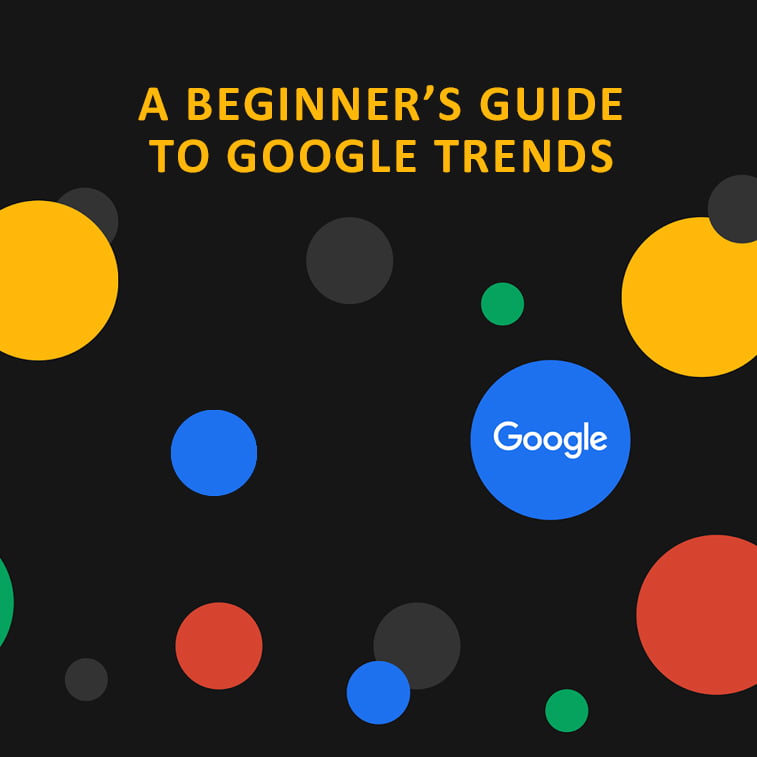Imagine you had an overview of what is currently happening around the world: what people are searching in the US, UK, Australia, India, Brazil. Be it out of curiosity or to improve some aspects of your business – it would be interesting to learn what trends are currently growing. No, you do not need a crystal ball for this. You need Google Trends.
But what is it exactly and how can you use it to expand your business? Let us find out in this Google Trends guide.
What Are Google Trends?
Google Trends is a website which allows you to take a sneak peek into what people are searching for on Google Search and its other services, such as Image Search, Google Shopping, etc.
“Trends data is an unbiased sample of our Google search data. It’s anonymized (no one is personally identified), categorized (determining the topic for a search query) and aggregated (grouped together). This allows us to measure interest in a particular topic across search, from around the globe, right down to city-level geography.” (Source: Google News Lab)
This powerful tool lets you get an insight of the most viral search trends since the beginning of their data collection, namely 2004.
This web facility was, however, launched back in 2006 as Google Insights for Search, which was merged into Google Trends in 2012.
In the beginning, Google did not update the data frequently. For example, from November 2006 until March 2007 there were no fresh data, so bloggers started talking about it, and it resulted in Google updating the database. There was also a period of inactivity until June 2007, after which Google started updating it regularly. In 2013, it added search trends for YouTube, Images, and Google Shopping, and as of 2017 we now get the opportunity to see the data in real time.
How Google Trends Work?
The numbers in Google Trends are shown in relative terms. This means that the peak of activity in searches is represented as 100, whereas no reported data as 0. The numbers are, therefore, not real, that is they do not represent the total number of searches, e.g. 100 searches on this day or 26.598 searches in 2012, but a general overview of search activity.
If you want to explore a topic, you can see how the interest for it re-occurs over time.
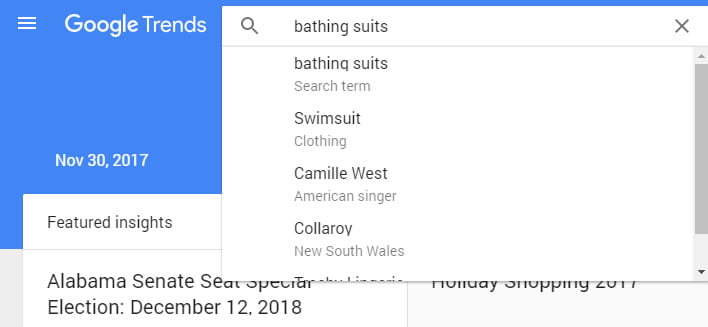
So, if you want to discover at what time of the year people start searching for ‘bathing suits in the UK’, you can simply type in this search term and set the filters for:
1. Location: worldwide or in a certain country.
2. Time: past hour, past 4 hours, past day, past 7 days, past 30 days, past 90 days, past 12 months, past 5 years, 2004-present, or a custom time range.
3. Category: Arts & Entertainment, Autos & Vehicles, Beauty & Fitness, etc.
4. Service: Web Search, Image Search, News Search, Google Shopping, YouTube Search.
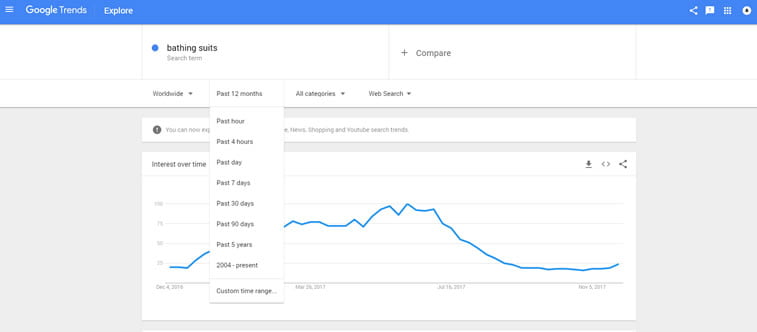
Depending on your needs, that is what you wish to learn about, the data will certainly be different and could tell you many interesting things.
Real Time Google Trends
Fresh news everybody! Three days ago, Google announced the real time search improvement. Namely, real time data for Image, News, Shopping, and YouTube search trends are now available to everyone worldwide. This means that you will be able to check what people were searching for during the past hour or for hours.
The real time option was available since 2013 for Web Search only, but Google started testing this feature on YouTube, News, Images and Shopping back in 2016. However, the general public was informed of this in November 2017, which filled many SEO specialists, content writers, and digital marketers with joy.
With the help of real time data, experts can see what people are searching for right now and predict trends in the period to come, which may have a significant impact on retail, news, events, etc. Interestingly, it is well-known that TIME looks back at search interest around each of the candidates for their Person of the Year award.
How to use Google Trends for SEO
There are numerous ways you can use Google Trends, e.g. for SEO purposes and to improve your website’s ranking.
The biggest advantage of Google Trends is in keyword research. Next to AdWords Keyword Planner, Trends are your strongest weapon in content creation. If you own a webshop or sell a service, you can see at what time of the year in your country people search for your items or services and plan your advertising activities according to the results. For example, you can plan AdWords campaigns for your fishing equipment shop in the spring, or winter jacket discount in October.
If you are in the content industry, you can see what topics are currently trendy and start writing about them. In the below example, you can see that in the last 30 days, the topic ‘Google Trends’ was on the rise until November 26 where we see an 82 peak, and is expected to rise in the future.
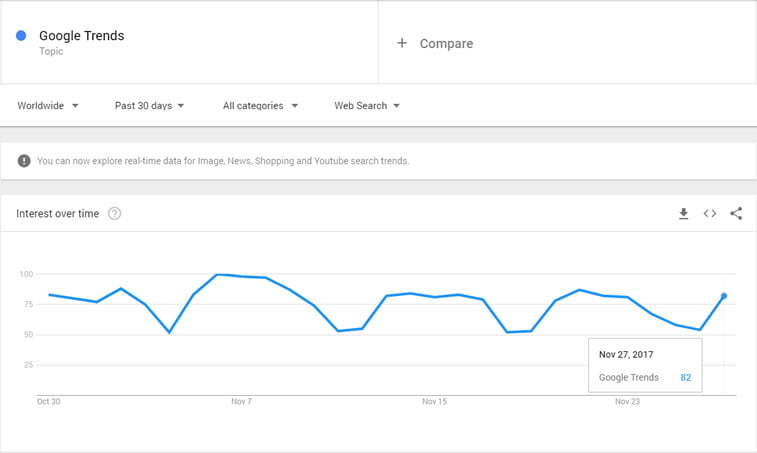
On the other hand, if you are planning to start a business, but are not sure which way to go, Google Trends can help you with discovering what is currently popular. So, if you are still hesitant about deciding about what OS developer you want to become, you can simply compare Android vs. iOS vs. Windows vs. Symbian, and see that the two latter are in decline and the former two operative systems are still very popular and you can navigate your career in app development to these waters.
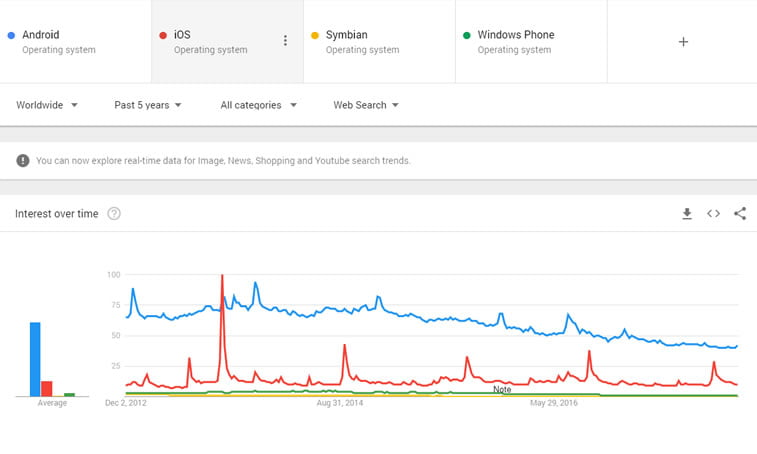
As you can see, there are many uses of Google Trends. The current, real-time trend is definitely one of the coolest features of this great tool. Tell us if you have already used it and how it helped your business in the comments below.
